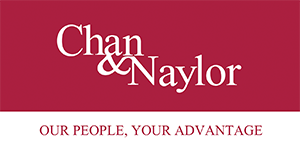The 2023-2024 Federal Budget was introduced amid daunting economic challenges, including high inflation, escalating interest rates, a persistent housing supply crisis, and an unstable global financial market. Nevertheless, the budget offers a glimmer of hope as it forecasts a $4.2bn surplus, supported by robust tax revenues, elevated commodity prices, and low unemployment. This surplus will fund half of the proposed initiatives, and it is hoped that they will address the country’s difficulties effectively.
Highlighted below are some of the vital tax plans presented in the budget.
Small Businesses
1. Get $20,000 in savings via instant write-off
Small businesses with an aggregate turnover of less than $10m are eligible to deduct in full depreciating assets that are less than $20,000.
The temporary full expensing rules for assets acquired from 6 October 2020, will expire on 30 June 2023.
Requirements for deductibility
1. Aggregate turnover should be less than $10m
2. The asset should be less than $20,000
3. Asset should first be used or installed between 1 July 2023 and 30 June 2024
Rules for deductibility
1. Write-off applies to per asset
2. If a business is GST-registered, the deductibility excludes the GST credits. For non-GST registered, it is $20,000 including the GST.
3. The provision does not apply to assets considered as capital works.
2. Save up to $650 per eligible household via the energy price plan relief
Small businesses can enjoy energy bill relief starting July 2023. To be eligible, your consumption must be below the threshold of the State you are in:
-
- 40MWh in Victoria
- 50MWh in Western Australia
- 100MWh in the ACT, NSW and Queensland
- 150MWh in Tasmania
- 160MWh in the Northern Territory and South Australia
You must have a separately metered business tariff. You are also not eligible if you run your business from home and the electricity consumption runs through your home electricity. For ACT and NSW, electricity consumption from embedded networks also disqualifies you to receive any energy bill relief.
Small businesses can enjoy up to $650, depending on which state your business is located
-
- Victoria = $325
- NSW = $650
- Northern Territory = $650
- Queensland = $650
- South Australia = $650
- Tasmania = $650
- Western Australia. = $650
- ACT = $624 if your business has average electricity use plus $325 rebate
3. Get up to $20,000 in additional cost deduction for eligible assets that improve energy use
From 1 July 2023 to 30 June 2024, small businesses through the Small Business Energy Incentive program can get an additional deduction of 20% up to $20,000 for assets designed to improve energy use and efficiency.
Rules for deductibility:
1. Up to $100,000 of total expenditure is eligible, capping at $20,000
2. Program is available to small and medium businesses with an aggregated turnover of less than $50m
3. Eligible assets or upgrades need to be first used or installed between 1 July 2023 and 30 June 2024
4. Lowered GDP uplift for PAYG and GST tax instalment
For 2023-2024, the government has set the uplift to 6% for small and medium businesses. The halved rate applies to businesses with an annual aggregated turnover of up to $10m for GST instalments and up to $50m annual aggregated turnover for PAYG instalments.
5. Franking credits and capital funding
The government revised the implementation date of a tax measure designed to prevent shareholders from taking advantage of franking credits attached to dividends funded through the raising of capital. The application date of the original measure was to be 19 December 2016. It has now shifted to 15 September 2022.
Franking credits represent the amount of tax already paid by a company on its profits. When a company distributes dividends to its shareholders, the shareholders receive the benefit of the franking credits, which can reduce their own tax liabilities.
As a result of this measure, dividend recipients are not entitled to a tax offset, the franking credit will not be considered when computing for your income tax, and the dividends are also not exempted from the non-resident withholding tax.
6. Tax breaks for build-to-rent projects
For build-to-rent projects, the government is increasing the capital works tax deduction from 2.5% to 4% and reducing the final withholding tax rate for eligible fund payments from MOT investments by 15%.
Eligibility requirements:
1. Construction commenced after 9 May 2023 after 7:30 AEST
2. 50 or more apartments are made available to the public for rent
3. The dwelling should be under a single owner for at least 10 years
4. The lease term should be at least 3 years per dwelling.
7. Implementation of 15% Multinational global and domestic tax
Large multinational and domestic corporations will be taxed at a minimum of 15% starting on or after 1 January 2024. This rate applies to large multinationals with annual global revenue of at least EUR750m (approximately $1.2bn). A top-up tax will also be implemented for large multinational corporations that are currently taxed less than 15%.
8. Tax amnesty program for small businesses
Small businesses with an aggregate turnover of less than $10m will be able to avail of a lodgement penalty amnesty program where ATO will not apply failure-to-lodge penalties to outstanding tax statements originally due from 1 December 2019 to 29 February 2022 lodged from 1 June 2023 to 31 December 2023.
Superannuation and NALI rules
9. Limitations on NALI rules for super funds
As a rule, SMSF should always transact at arm’s length, and any non-arms length income is taxed at the highest marginal rate. This includes any additional income or cost savings as a result of a related party transaction.
The government intends to amend the rules concerning the taxability of NALI by:
1. Capping the taxable NALI to twice the level of general expenses
2. Exempting large APRA regulated funds from NALI provisions for both general and specific expenses, and
3. Excluding contributions from fund income being taxable as NALI
10. 30% tax on total superannuation balance
The new tax rate of 30% will apply to individuals with a total superannuation balance of over $3m. This rate will apply starting 1 July 2025.
Individuals and Households
11. Get up to $500 per eligible household via the Energy price plan relief
The government through the Energy Bill Relief Fund, will provide energy bill relief to eligible households and small business owners.
For households, you must be the primary account holder or your name should be designated as an owner of the account, and you must hold an eligible concession card or receive payments from the government.
You can get up to $500 per eligible household, depending on which state or territory you live in. For example, in VA, you can get $250 per eligible household plus another $250 in direct payment.
-
- Victoria = $250 per eligible household plus $250 direct payment*
- NSW = $500
- Northern Territory = $350
- Queensland = $500
- South Australia = $500
- Tasmania = $500
- Western Australia. = $350
- ACT = $175
12. Get low-cost finance/mortgage via the Household Energy Upgrades Fund
The government will establish a $1.3bn Household Energy Upgrades Fund to support home upgrades that will improve energy efficiency and performance. It has 2 parts:
• About $300m is allotted for upgrades of social housing and
• About 110,000 low-cost loans totalling $1bn will be provided by the government through the Clean Energy Finance Corporation with partnerships with private financial institutions.
Currently, there are no eligibility criteria for one to avail of low-cost finance and mortgage. Any upgrades that improve your household’s energy performance are covered. For example, the installation of solar rooftop panels and cooling/heating appliances are eligible.
13. Medicare levy on low-income families and exemptions
The government has increased the Medicare levy thresholds for low-income single, families, seniors and pensioners effective 1 July 2022.
What is the income limit for the Medicare levy exemption?
You are not exempted from paying Medicare if your taxable income is less than or equal the following:
-
- •Single – $24,276
- Family – $40,939
- Single Seniors and Pensioners – $38,365
- Family Seniors and Pensioners – $53,406
Additionally, the threshold is increased by $3,760 per dependent child or student.
Lump sum income payments received by low-income households
Starting on 1 July 2024, the government will exclude qualifying lump sum payments in arrears from the Medicare levy. This initiative ensures that low-income taxpayers are exempted from paying more for Medicare levy when they receive a lump sum payment that they’re entitled to.
To be eligible,
-
- Your yearly income in the last 2 years must meet the eligibility requirements to which the lump sum accrues
- You must also quality for existing lump sum payment in arrears tax offsets
14. Home Guarantee extended to friends and siblings
As of July 1, 2023, access to the Government’s Home Guarantee Scheme will be expanded to joint applications from “friends, siblings, and other family members” and to those who have not owned a home for at least 10 years.
First Home Guarantee
Enables home buyers to pay at least 5% and maximum 15% deposit without paying Lenders Mortgage Insurance.
-
- Friends and family members will be eligible for joint applications
- Available to first time home buyers, and non-first time home buyers who haven’t owned a property in 10 years
- Available to Australian citizens and permanent residents
- At least 18 years old
- Earning up to $125,000 for individuals or $200,000 for joint applicants
- Regional area eligibility requirement for Regional First Home Buyer Guarantee
Family Home Guarantee
Enables home buyers to pay at least 2% and maximum 15% deposit without paying Lenders Mortgage Insurance.
-
- Available to single parents with at least one dependent child, including guardians
- Available to Australian citizens and permanent residents
Other key tax measures
Notable benefits available to individuals and families under the 2023-2024 Budget are listed below:
1. From 20 September 2023, the base rate under JobSeeker will increase by $40 per fortnight.
2. From 20 September 2023, Parenting Payment (Single) will increase its age cut off from 8 to 14 years old with an increase of $176.90 per fortnight.
3. Maximum rates of the Commonwealth Rent Assistance will increase by 15% from 2023-2024
4. Clean Building MIT withholding tax concession will also be extended to data centres and warehouses provided that construction commences after 7:30 AEST on 9 May 2023.
Questions about tax lodgement
For any questions about this article and how it affects your finances, you may contact us or reach anyone from the tax team.





